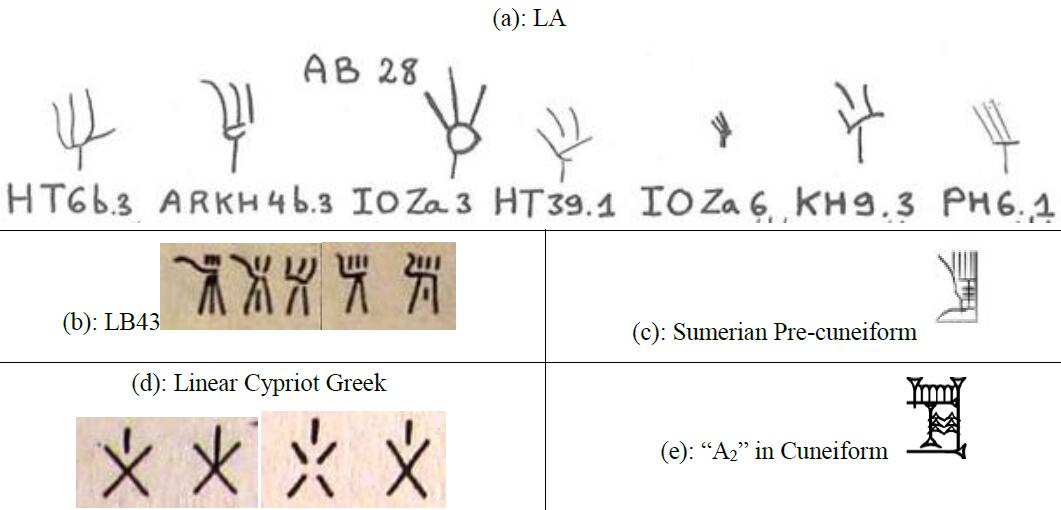Cretan Protolinear Script: The Sixth-Vowel Set of Syllabograms
Abstract
This paper presents a set of eighteen signs of the Minoan scripts, used for syllables of the Consonant-Vowel (CV) type. What these eighteen syllabograms have in common is their vowel, which is a kind of “schwa”, treated here as the “sixth vowel” of the Minoan scripts, counted after the usual five vowels: “a”, “e”, “i”, “o” and “u”. Most of these syllabograms are considered to be of unknown phonetic value, while a few are known to be used for the Mycenaean Greek “αι” ([əj]). The presented approach is conducted according to the theory of the Protolinear script, being the script that all the Minoan scripts evolved from, including Linear A, Linear B and Cretan Hieroglyphics. A detailed study on the nature of that “schwa” and its evolution from - and to - related vowels precedes the presentation of the syllabograms. In conclusion, it is demonstrated that the phonetic value of each syllabogram corresponds to the Sumerian name (in a conservative dialect) of the object depicted by the syllabogram, thus more light is shed on the linguistic ancestry of the Minoan scripts, the practice followed for their creation and the phonetic values of eighteen hitherto un-transliterated syllabograms.
Downloads


This work is licensed under a Creative Commons Attribution 4.0 International License.
Copyright for this article is retained by the author(s), with first publication rights granted to the journal.
This is an open-access article distributed under the terms and conditions of the Creative Commons Attribution license (http://creativecommons.org/licenses/by/4.0/).









1.png)









1.png)











